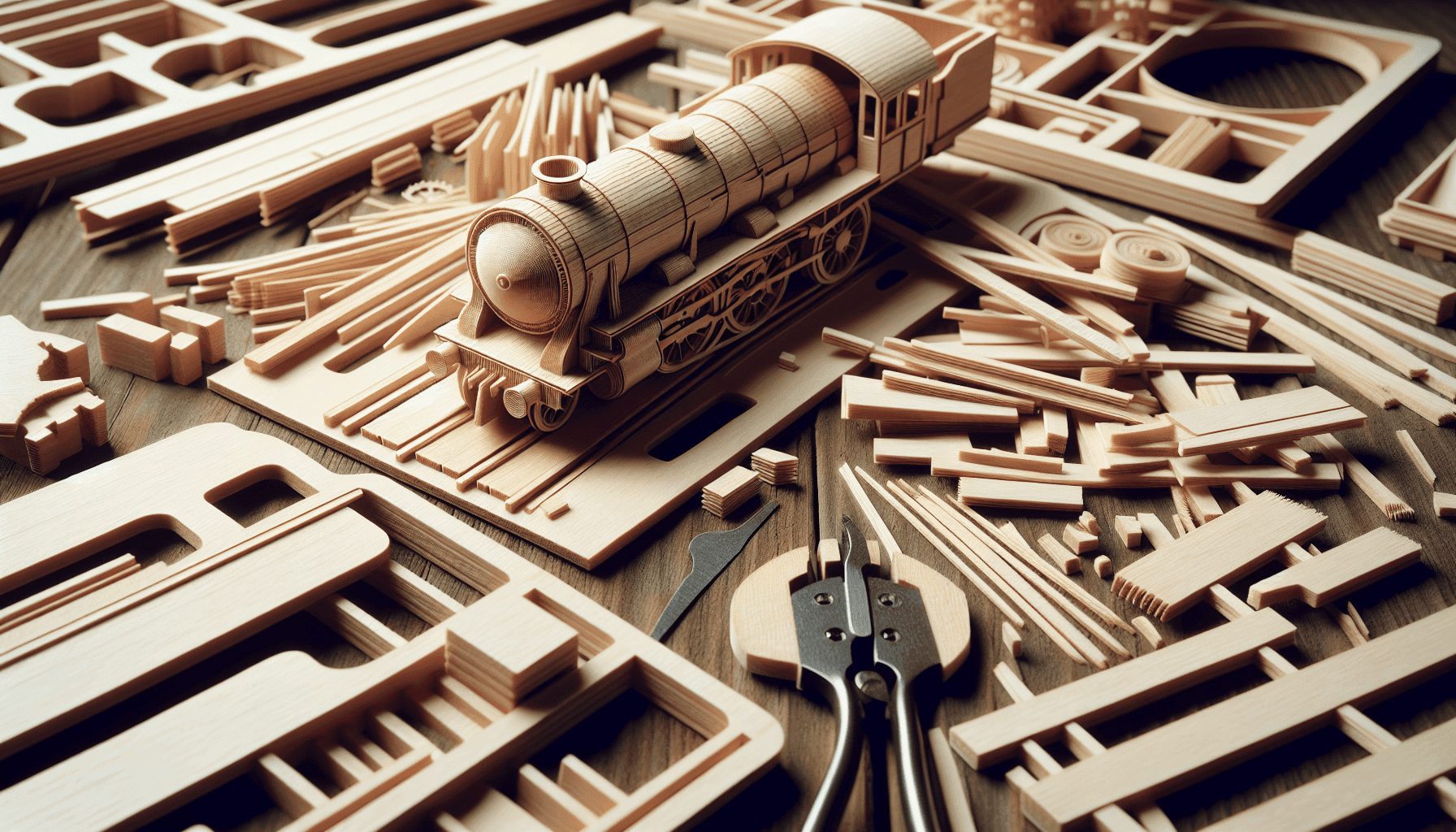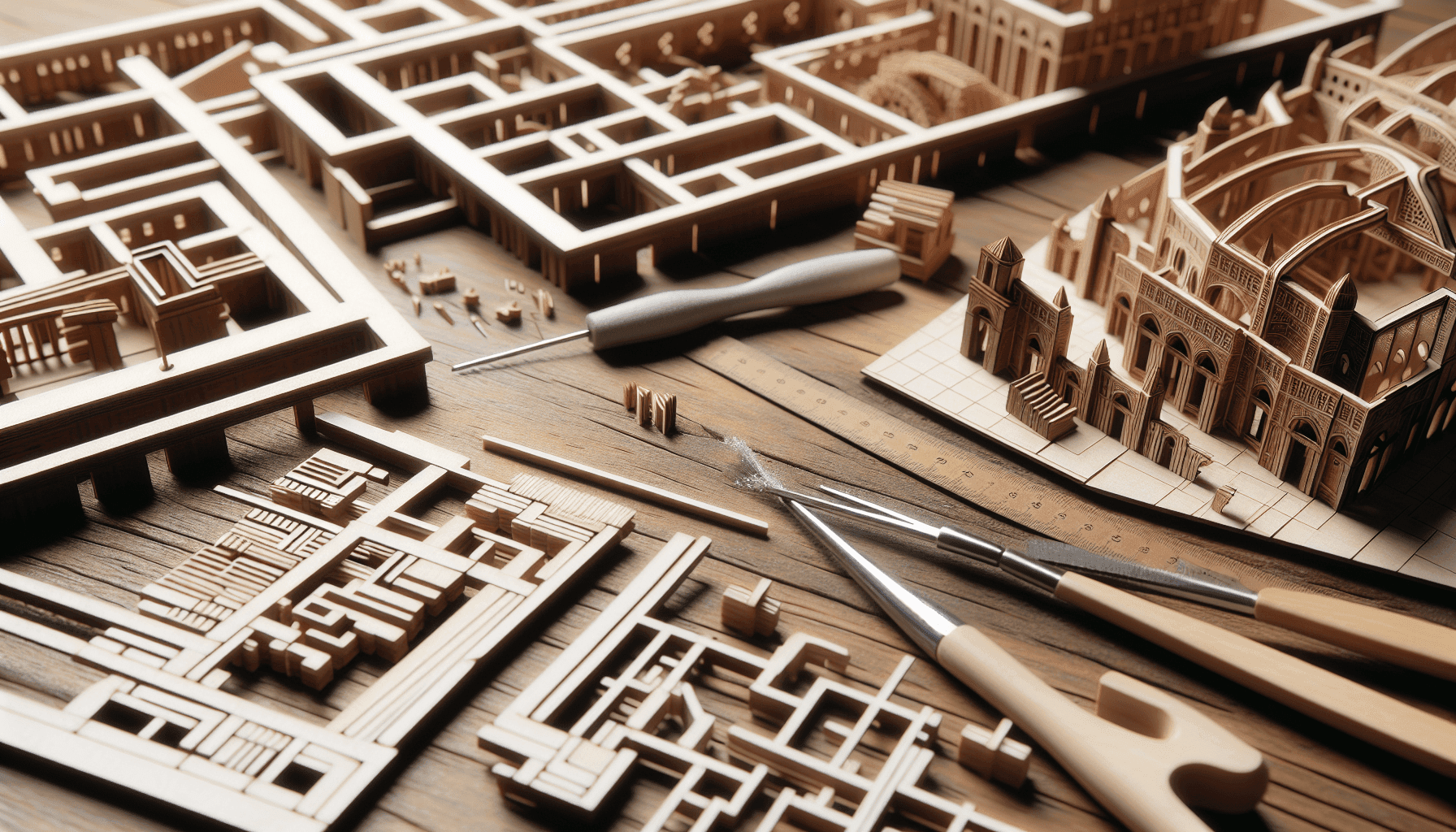Have you ever wondered what goes into creating those fascinating 3D wooden model kits that transform into stunning replicas of ships, cars, or whimsical fantasy scenes? If you’ve admired the intricate details and craftsmanship of these kits, you might be curious about the materials that make these miniature marvels possible. This question opens a gateway into a world where creativity meets craftsmanship, and ordinary pieces of wood are transformed into extraordinary works of art.

Introduction to 3D Wooden Model Kits
3D wooden model kits have captured the hearts of hobbyists and artists alike. These kits are much more than simple puzzles; they provide a rich, rewarding experience that blends the joy of building with the satisfaction of creating something enduring and beautiful. Brands like Robotime, Rokr, Ugears, Wood Trick, and others have perfected this art form, making it accessible to enthusiasts around the world.
In essence, 3D wooden model kits are constructed from precisely cut pieces of wood, often accompanied by gears, levers, and other mechanisms. But what specifically are the materials used, and why are they chosen? Understanding these components will deepen your appreciation for each painstakingly crafted model.
The Basics: Wood Selection
Plywood — The Backbone of 3D Models
Most 3D wooden model kits use plywood as their primary material. Plywood offers a perfect balance of strength and flexibility, making it ideal for crafting sturdy models that can withstand assembly and handling. Plywood is composed of thin layers, or “plies,” of wood veneer, glued together with adjacent layers having their wood grain rotated up to 90 degrees to one another. This construction enhances durability and prevents warping, ensuring the longevity of models.
Basswood — The Detail Carrier
In some cases, especially where finer details are essential, basswood is used. It’s softer than plywood and easier to manipulate for delicate embellishments. Basswood’s uniform texture and close grain allow for precise and clean cuts, perfect for detailed parts of a kit that need to stand out or fit perfectly with adjoining components.
Other Essential Materials
Baltic Birch Plywood — A Premium Choice
Considered one of the finest types of plywood, Baltic birch is often favored for high-end 3D wooden model kits. Known for its excellent strength-to-weight ratio and smooth finish, it holds fine detail well. Baltic birch is prized for its aesthetic appearance, offering a beautiful grain pattern that enhances the visual appeal of the finished model.
| Material Type | Characteristics | Uses |
|---|---|---|
| Plywood | Durable and versatile | Main material for most kits |
| Basswood | Soft and easy to carve | Detailed and decorative components |
| Baltic Birch Plywood | Strong, smooth, and visually appealing | Premium kits and intricate designs |
Metal Components — Adding Functionality
Besides wood, kits may include small metal parts. These are typically used in models with mechanical aspects, such as moving gears or wheels. Metal components provide the necessary strength and precision required for functional elements, ensuring that the interactive parts work smoothly and reliably.
Paper and Cardstock — Completing the Look
In some models, especially those with decorative or scenic backdrops, paper or cardstock may be included. These materials are used to add color and textural diversity, often serving as backgrounds or auxiliary parts that enhance the overall aesthetic without adding significant weight.
Manufacturing Process
Laser Cutting — Precision and Detail
The intricate pieces of a 3D wooden model kit are often produced using laser cutting technology. This process involves utilizing high-powered lasers to accurately cut and engrave thin sheets of wood into the required shapes. Laser cutting allows for precision that manual methods can’t achieve, ensuring each piece fits perfectly with minimal flaws.
Sanding and Finishing — A Touch of Excellence
After cutting, the wooden pieces might go through sanding to smooth out rough edges or surfaces. This step is crucial, ensuring every piece aligns cleanly during assembly. Some kits may also apply a veneer or finish to enhance the appearance and protect the wood against environmental damage.

Environmental Considerations
Sustainability of Materials
As environmental awareness grows, so does the demand for sustainably sourced materials. Many manufacturers are committed to using eco-friendly practices. This involves sourcing wood from responsibly managed forests and reducing waste during production. Additionally, biodegradable glues and finishes can replace synthetic options, appealing to eco-conscious consumers.
Packaging Practices
Beyond the materials used in the kits themselves, manufacturers are also considering the sustainability of their packaging. Recyclable materials, minimal plastic usage, and innovative design elements that reduce overall packaging are steps being taken to decrease the ecological footprint of these products.
The Assembly Experience
Instructions and Guidance — The Builder’s Companion
One might not immediately consider instructions a material, but for many enthusiasts, the detailed, thoughtfully crafted manuals are as vital as the wood itself. Instructions guide modelers through complex construction, ensuring a smooth and enjoyable building process. Clear diagrams and step-by-step explanations make even intricate models approachable.
Tools and Techniques — Making it All Fit
Assembly usually requires only basic tools, such as a craft knife, sandpaper, and occasionally glue. However, precision is key, and patience becomes an essential ‘material’ in any model builder’s toolkit.
Conclusion: A Craft Fueled by Creativity
Understanding the materials used to create 3D wooden model kits enhances your appreciation for this delightful hobby. From the choice of wood that accounts for the models’ aesthetic and structural properties to the metal components that might bring movement and interactivity, each element is thoughtfully chosen to contribute to the harmony and integrity of the final product.
The next time you embark on assembling a 3D wooden model, you’ll know you’re working with materials carefully selected for their quality, sustainability, and ability to deliver an exceptional building experience. Whether you’re a seasoned modeler or new to the craft, the materials, meticulous design, and thoughtful execution behind these kits are sure to bring you countless hours of creative satisfaction and wonder. Ready to start your 3D wooden puzzle journey? Click on any of the following links for our reviews:
All Categories Boats Clocks Marble Runs Musical Boxes Musical Instruments Puzzle Boxes Trains Trams Trucks